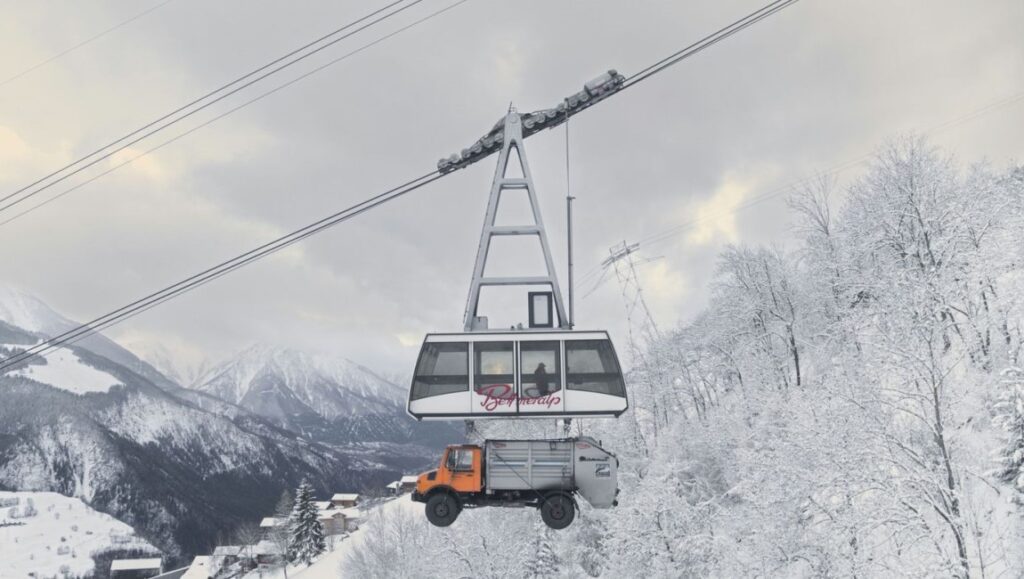Early on in Nikolaus Geyrhalter’s new film Matter Out of Place, a man investigating an unearthed landfill site utters the phrase “out of sight, out of mind.” He’s referring specifically to our society’s propensity for burying its unwanted detritus, but it’s also a useful summation for Geyrhalter’s entire modus operandi. The Austrian filmmaker has built his career on showing viewers those things which typically remain hidden, the corners of the world where assorted “others” do the dirty work of fueling developed nation’s appetites — literally in the case of 2005’s Our Daily Bread, or more broadly metaphorical, as in 2019’s Earth. Here, Geyrhalter has turned his camera to the tons of junk accumulating all over the world, the remains of our collective unfettered consumption, tracing a winding journey from collection to transportation to disposal. Filmed on and off over the course of four years (in part due to Covid disruptions) on several continents, Geyrhalter’s now familiar fixed-camera, tableaux-style compositions attempt to take in the full enormity of our waste. It is eye-opening, to say the least.
An opening title card informs us that “matter out of place,” or “moop,” refers to “any object or impact not native to the immediate environment.” Shots of a beautiful, snow-capped mountain range reveal upon closer inspection acres of plastic garbage scattered around the edges of a river bed. Next, we cut to an excavator digging up a spot in a large, flat field. After several scoops of turf and dirt, the machine begins pulling up scrap metal and old tires, amongst other bulky waste. Two men converse, some of the only audible dialogue in the film, discussing the various waste sites scattered around where garbage was buried and then covered up. This process of consume-discard-hide is essentially Geyrhalter’s thesis, and the remainder of the film largely eschews broader contextualizing, instead allowing long sequences to play out in images sans commentary. As is typical for Geyrhalter, there are no title cards identifying specific locations, although one can occasionally glean an identifying landmark or catch some of whatever language is being spoken. From Switzerland and Austria to Albania and Nepal, Geyrhalter watches garbage get collected, then disposed of in various ways.
One section finds a man going door to door receiving trash from a neighborhood and stacking it up on a push cart. The cart is eventually emptied into a truck, which then joins a huge convoy that makes its way through muddy, winding roads to a huge landfill, where the trucks take turns dropping their cargo. Another sequence follows a similar trajectory, except now at a posh ski resort in the Swiss mountains. Several scenes feature mind-boggling feats of large-scale engineering, like huge incinerators found in Austria, or a massive concrete structure that allows garbage trucks to dump waste directly into its gaping maws that funnel trash directly into a landfill. The main trajectory of the film, its organizing principle, is this movement of garbage away from those who are creating it to far-flung locations removed from daily life. Indeed the film ends with men sweeping the desert, part of The Burning Man Festival’s “leave no trace” policy of cleaning up after the event is over. They’ve successfully cleaned the concert grounds, but the entire film has been spent showing viewers exactly where the garbage these people have collected is going. Ultimately, we are just shifting piles of disgusting shit from one place to another. Geyrhalter knows very well that “out of sight, out of mind” is destroying the world, and he wants to make us look at it.
There’s a kind of hypnotic, monotone quality to Geyrhalter’s work. He tends to hold shots for long intervals, allowing an action to transpire in real-time from beginning to end (in this case, many scenes of garbage trucks unloading in various locales). It’s never boring, not exactly; instead, it speaks to the enormity that he is trying to capture, these frequently beautiful landscapes that have somehow been ruptured or otherwise upended by humans. Geyrhalter isn’t an essayist, nor is he lecturing, but there is a political point of view in his films. We might find a kind of fascination or even an odd beauty in all this decay, but it all adds up to something so unfathomable that no camera can adequately record it. Ultimately, Matter Out of Place becomes an essential part of a loose trilogy alongside Our Daily Bread and Earth. Each captures one aspect of humankind’s constant pillaging of natural resources, irrevocably altering the land as we skip toward our collective demise.
Published as part of Locarno Film Festival 2022 — Dispatch 2.


Comments are closed.